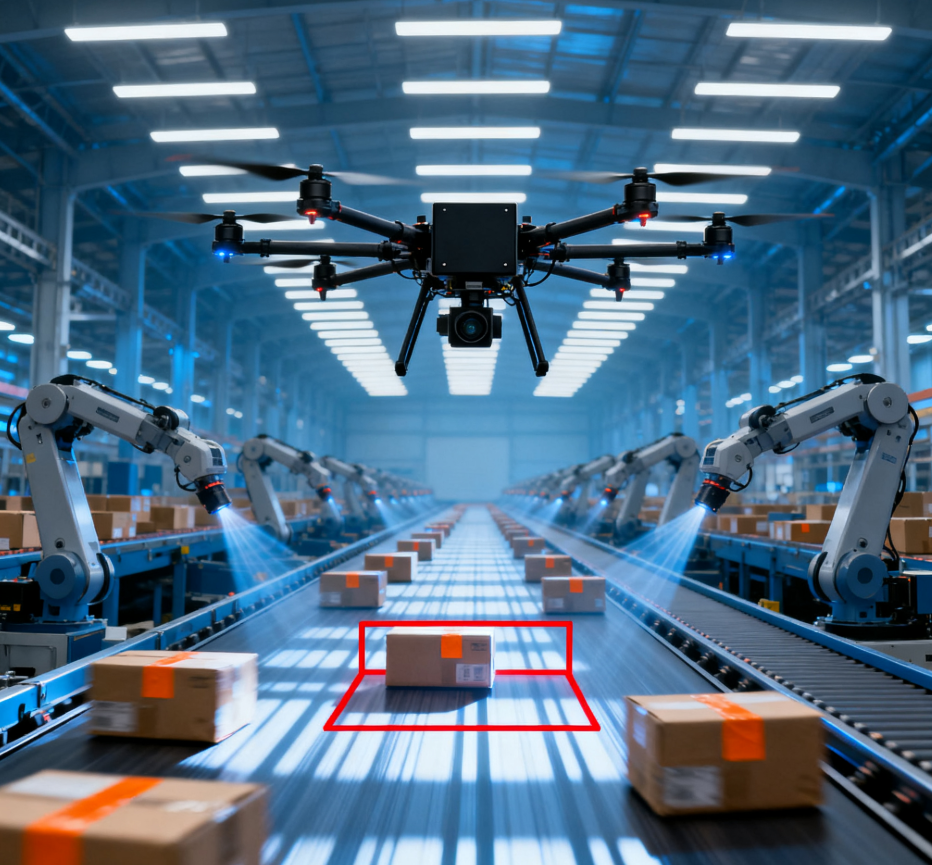mmWave Radar-Enabled Indoor Drone Navigation: Concept and Technical Outlook
As drones increasingly find applications in industrial inspection, warehouse logistics, and research education, the demand for autonomous indoor navigation is rapidly growing. Indoor environments, however, pose unique challenges for drone navigation due to GPS unavailability, complex light conditions, and structural constraints. mmWave radar technology offers a promising solution for precise positioning, obstacle avoidance, and navigation in such scenarios. This article explores the potential, technical advantages, conceptual applications, and challenges of mmWave radar for indoor drone navigation.
Technical Challenges in Indoor Drone Navigation
Indoor environments differ fundamentally from outdoor ones, presenting multiple navigation challenges:
-
No GPS Availability: Traditional satellite-based positioning is unusable indoors.
-
Complex Lighting Conditions: Low-light or dark environments can compromise camera-based navigation systems.
-
Limited Environmental Features: Uniform or repetitive spaces make feature extraction for visual navigation unreliable.
-
Cost and Energy Constraints: While LiDAR provides accurate 3D spatial information, its size and power consumption limit use on lightweight drones.
mmWave radar addresses these challenges by emitting high-frequency electromagnetic waves that can penetrate dust and operate in low-light conditions, allowing real-time detection of distances and directions between the drone and surrounding obstacles. Combined with an Inertial Measurement Unit (IMU), drones can achieve six-degree-of-freedom (6DoF) pose estimation, including pitch, yaw, roll, and spatial coordinates, enabling stable flight in complex indoor environments.
Core Advantages of mmWave Radar for Indoor Drones
High-Precision Positioning and Pose Estimation
mmWave radar provides millimeter-level distance resolution. By fusing radar data with IMU readings, drones can continuously calibrate their position and orientation. This ensures safe navigation even in narrow corridors, cluttered storage areas, or complex obstacle environments. Unlike visual navigation, radar maintains stability in low-light, dusty, or featureless spaces.
Dynamic Obstacle Detection and Avoidance
Indoor obstacles may be static walls or moving objects such as people or equipment. mmWave radar can detect both static and dynamic targets in real time. During flight, drones can automatically adjust their trajectory to avoid obstacles. Compared to vision or LiDAR systems, radar solutions achieve similar functionality with lower computational requirements and energy consumption.
Compact and Low-Power
mmWave radar modules are small, lightweight, and energy-efficient, making them ideal for lightweight drone platforms. Unlike high-power LiDAR, radar modules do not significantly increase drone weight or drain battery life, enabling longer operational durations for inspection or multi-task missions.
Privacy and Safety
Radar does not capture images or audio, ensuring privacy in offices, laboratories, or warehouses. This is a key advantage over camera-based navigation systems in sensitive environments.
Conceptual Applications and Potential Scenarios
While commercial deployment of mmWave radar-enabled drones is still in the research and experimental phase, concept studies and prototypes demonstrate significant potential.
Warehousing and Logistics
Drones can navigate autonomously among high-density shelves, performing inventory checks, inspections, and goods transport. Radar operates reliably even in low-light or dusty conditions, enabling nighttime or off-peak operations and improving warehouse efficiency.
Industrial Inspection and Underground Exploration
In mines, tunnels, underground pipelines, or large industrial halls, drones equipped with mmWave radar can autonomously navigate and avoid obstacles, supporting safe inspections and real-time data collection. Radar’s anti-interference capability ensures stable navigation in challenging environments.
Research and Educational Platforms
Low-power, high-precision radar offers an ideal testbed for research and educational purposes. Teams can experiment with indoor navigation algorithms, multi-drone coordination, and dynamic obstacle avoidance, providing valuable insights for future commercial indoor drone applications.
Implementation Challenges and Future Outlook
Despite its potential, practical deployment of mmWave radar in indoor drones faces several challenges:
-
Multi-Drone Coordination: Efficient communication protocols and task scheduling strategies are needed to prevent interference or collisions.
-
Dynamic Environment Interference: Radar signals may be affected by reflections or obstacles, requiring algorithm optimization to maintain accuracy.
-
Computational Load vs. Battery Life: Real-time obstacle avoidance and high-precision positioning increase computational demands, necessitating a balance between performance and flight endurance.
With ongoing advancements in hardware miniaturization, radar signal processing algorithms, and multi-sensor fusion methods, mmWave radar is expected to become a core technology for indoor drone navigation. Its adoption could unlock innovative solutions for logistics, industrial inspection, research, and education, offering significant operational and strategic benefits.
FAQ (Conceptual Outlook)
What is the expected positioning accuracy?
Combining radar and IMU, drones can achieve approximately 7–10 cm spatial accuracy in concept applications.
Is this suitable for small drones?
Yes, mmWave radar modules are compact, low-power, and suitable for lightweight platforms.
How does it compare to vision or LiDAR?
Radar operates independently of lighting, adapts to low-light or featureless environments, and has lower size and power requirements.
Can it operate in dynamic or multi-target environments?
Radar supports multiple target detection but requires algorithm optimization for complex scenarios.
Will it impact battery life?
Low-power radar modules have minimal impact on drone endurance compared to high-power LiDAR.



